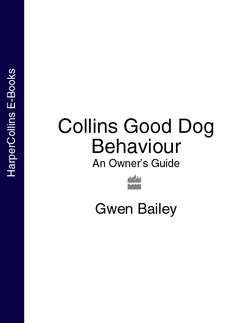Читать книгу Collins Good Dog Behaviour: An Owner’s Guide - Gwen Bailey - Страница 34
ANGRY DOG
ОглавлениеAn angry dog will often become very still and stiff just before he bites. This period of stillness gives him time to weigh up the opposition and gives the opponent a chance to back down or submit. If you find yourself in a situation where you have done something to make a dog react in this way, for example, you have stroked a dog that did not want to be touched, be very careful what you do next. Keep very still and retreat very slowly.
Signs to look for:
Stillness and a rigid posture.
Eyes fixed and staring.
Conflicting signals of confidence and fear, for example, tail held high, head high, eyes wide and pupils dilated, hackles raised.
When a dog becomes angry, adrenalin flows around the body and other changes occur that help to sustain any action that may be taken. For this reason, it is best to isolate an angry dog and let him calm down for at least half an hour before approaching him again. If your dog has had a bad experience, he is likely to be more reactive for a few days after the incident so care should be taken until he has recovered.
